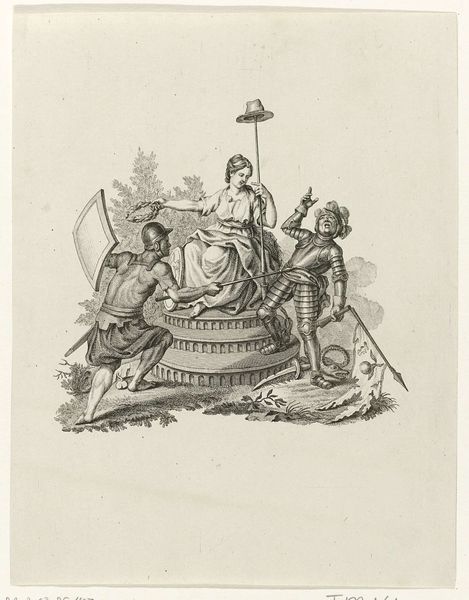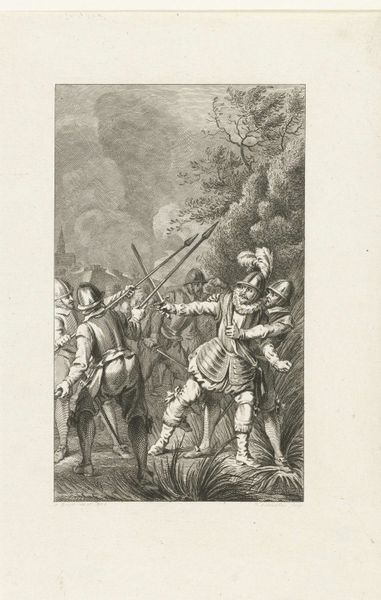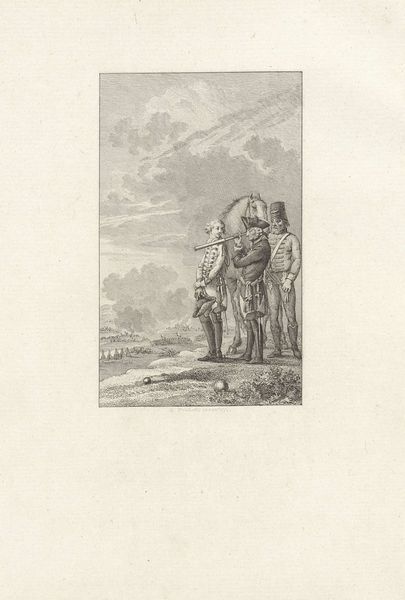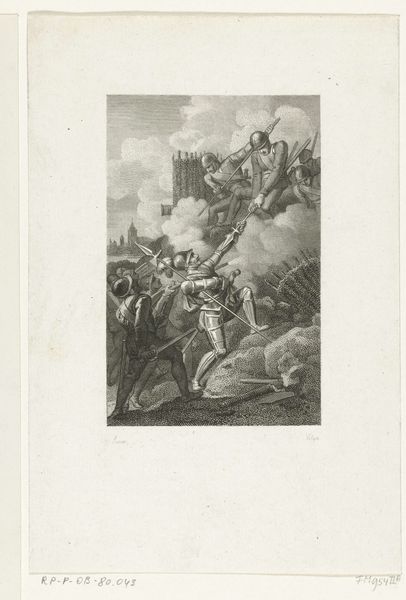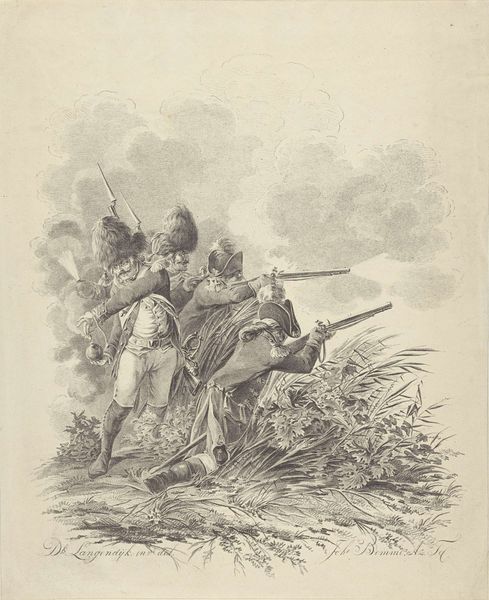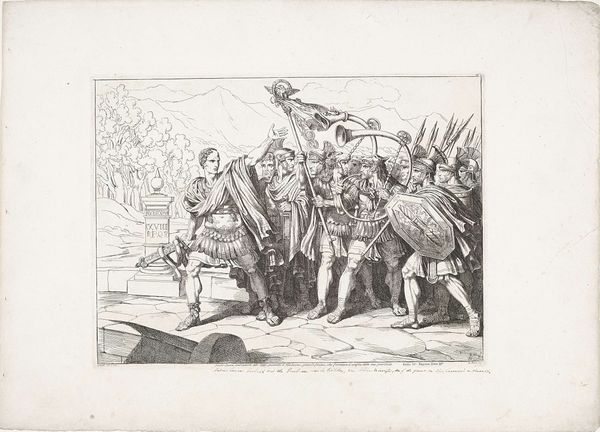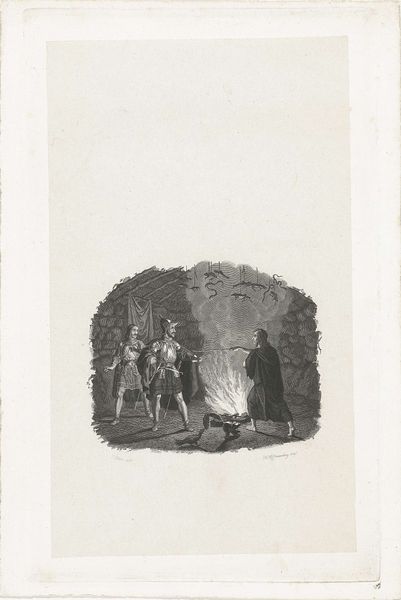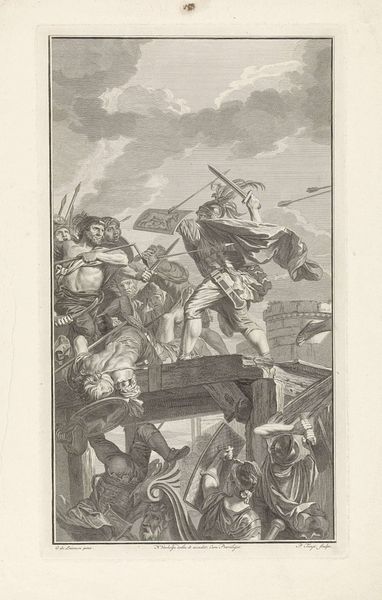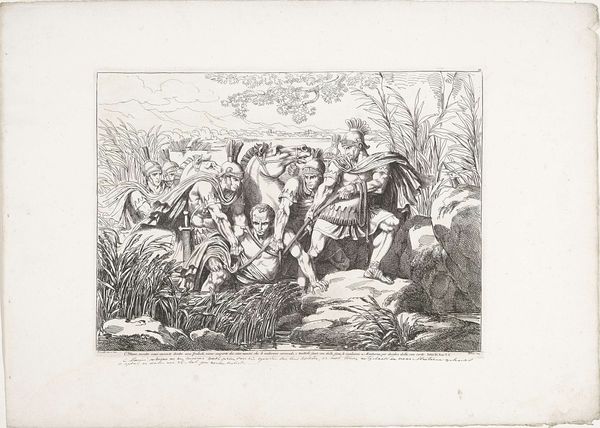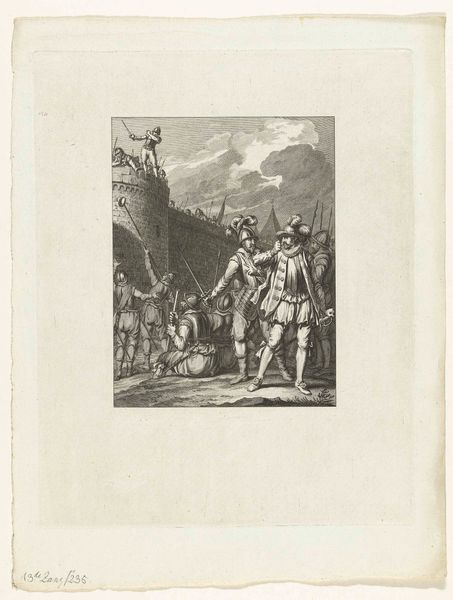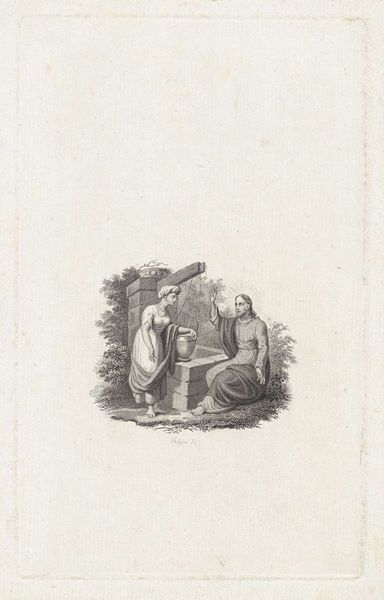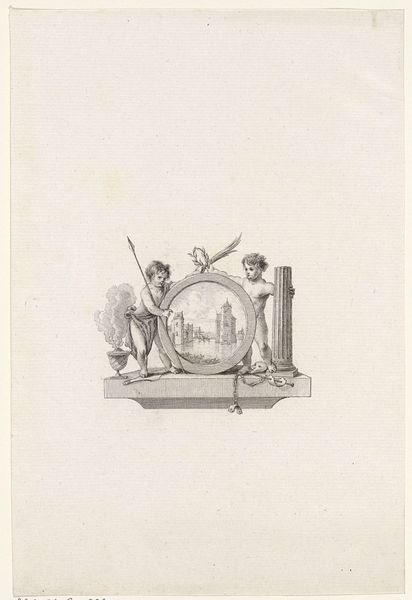
print, engraving
#
narrative-art
# print
#
old engraving style
#
classical-realism
#
figuration
#
personal sketchbook
#
ancient-mediterranean
#
genre-painting
#
history-painting
#
engraving
Dimensions: height 240 mm, width 150 mm
Copyright: Rijks Museum: Open Domain
Curator: What strikes you first about this engraving? Its drama? Editor: Definitely the contrast, and not just of light and shadow. The kneeling man in his robes seems so vulnerable, an island of softness amid all the hard edges of spears, shields, and architectural background. Curator: This is "Geknielde man tussen twee krijgers" or "Kneeling man between two warriors." It's an engraving from between 1797 and 1852, currently held in the Rijksmuseum, created by Philippus Velijn. For me, its interest lies in understanding Velijn's place within a visual economy increasingly dominated by printed imagery and its accessibility to a broad audience. The etching technique itself also holds its value as a specific and tangible way of image making, compared to, say, mass printing today. Editor: Absolutely, the materiality matters! Look at the detail Velijn achieves. The lines define form so precisely; it's like looking at a sculpture translated to a two-dimensional plane. Notice the round shield design echoing the domes in the far architectural elements. This kind of intentional mirroring ties the composition together, solidifying it. Curator: And, indeed, there's the narrative aspect to it. Genre and historical painting were significant drivers for print production in this period. This image, though without specific attributions, seems rooted in historical depictions of conflict and submission. Whose history it represents, how, and for whom, were all critical considerations then. This raises the role that these prints fulfilled for many ordinary citizens: not only in how these pictures could transport information or deliver a feeling. Editor: True. And let’s acknowledge its limitations, too. Despite its detail and precision, there's a certain coldness here. Perhaps it's the very nature of engraving. Compare this, to, say, a painting and one finds there an immediate emotional warmth that's somewhat lacking. Though there are so many elements within the picture plane that coalesce to show great intention in art-making, I find that certain energy just isn’t accessible here. Curator: I appreciate your thoughts, I hadn't thought about its warmth before. Reflecting on it now, it speaks about not only technique and design, but access to education of citizens and availability to certain artistic material, making art. Editor: And for me, I feel reminded again about how much formal choices determine emotional impact, regardless of time, subject or origin.
Comments
No comments
Be the first to comment and join the conversation on the ultimate creative platform.
